Bruha: 6 Filipina artists showcase works
Bruha: 6 Filipina artists showcase works
Cultural identity and empowerment were among the themes explored by six young Filipina artists who showcased their works after a six-month arts-based mentorship program.
The arts showcase called “Bruha” held on the evening of April 14 was the culmination of a program at the Kapisanan Philippine Centre for Arts and Culture in Kensington Market. The mentorship program, Clutch, is in its fourth year. The showcase included live performances of spoken word and dance, and displays of visual art by the six female artists. The crowd of nearly two hundred mostly young people filled the bi-level centre, transformed into a vibrant gallery, to marvel at the works.
Artist Renelyn Quinicot introduced the performances and described to the audience how important the program became to her. “What started off as an opportunity to grab some coffee with some new peeps (people) and learn some things in workshops has now become my home, my family,” she said. “I’ve never cared about anything more than I care about Clutch.”
About the title of the showcase, “Bruha,” which is usually translated to mean witch, artist Victoria Marie said to the audience the young Filipina artists are reclaiming the word. “We are taking it back and making it ours! We are bruha!,” Marie said to emphatic screams and applause from the lively crowd.
“The indigenous, beautiful, powerful spiritual, and highly revered women in the Philippines– pre-colonization– were considered witches,” she said. The Spanish “gave a negative name to a positive thing” she continued, and generations after, Filipinos have adopted this association. Women thought that taking on an indigenous identity was negative and those who were loud and ‘out there’ were considered crazy and called bruhas.
For the program coordinator, Kristina Guison, the process was very challenging. “It was an intense six months. At first it was every other Saturday, then it turned into every Saturday.”
Guison helped organize the mentors and the workshops, which included encaustic collage, introduction to filmmaking, and graphic design, to help the women come up with as many works as they could to express themselves.
Guison said that in the end it was worth it and she grew as well. “It also made my experience as an artist richer because some things I never considered until I suggested to them, ‘Why don’t you try it this way?’”
Her sister, artist Diane Guison, learned block printing for the first time through a workshop. That evening, she showcased prints of her Lola (grandmother), two photography series, and an installation piece.
One of the most important things she learned was to be proud to be Filipino, she said in an interview. “At first I thought I wouldn’t have much in common with the other participants because they were all Filipino-Canadians born here. But we all became very good friends,” she said. “We all have a connection being Filipino.”
Artist Victoria Bacnis focused on stereotypes about Filipinos, such as being nannies, when producing her photography series.
“I always did art for school, that means do art for your professor, do art for a mark. Doing art for Clutch made me explore my artistic person and made me do art for me rather than someone else.”
An attendee at the showcase, Carina Delfrate, had a strong reaction to Bacnis’s graphic work and appreciated that she put the stereotypes out there for people to see.
“I grew up in Scarborough in the 80’s and 90’s and if I had a program like this, I wouldn’t have gone through some of the struggles that I went through,” Delfrate said. She said those struggles included “hanging out with the wrong crowd, not have anything to do, not having an outlet in the community, or being connected to other Filipinos.”
Attendee Sarah Himaya was among the many youth who came. “I found it really cool because I’ve never been to a Filipino art show before.”
A Caribbean-Canadian attendee, Mattieau St. Cyr said, “I wish my community had something like this– an area for artists and creative individuals to grow and express themselves, and further develop the community as a whole.”
PHOTOS: JOSEPH SMOOKE
The other artists who showcased their works were Charisse Aragoza and Maureen Mendoza.
Film producer and director, Romeo Candido, was a Clutch mentor and leads a workshop for the young women on filmmaking and storytelling. “I’ll mentor them forever,” he said. “Anyone that’s in this group can consider me a kuya (older brother).”
“It’s important for me as a working artist to give back because I remember the people who gave me a break,” Candido said. “I had mentors to help me apply for my first grant, to get money, to give me a job. I want them to know that it’s possible.”
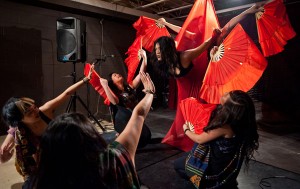
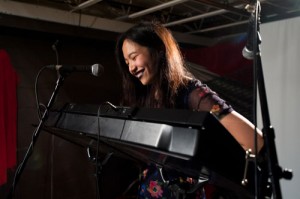
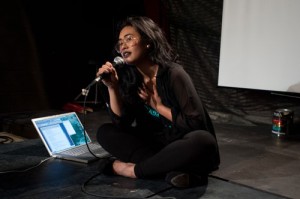
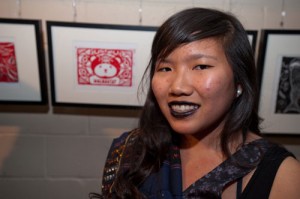
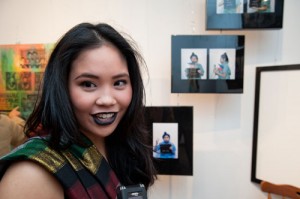
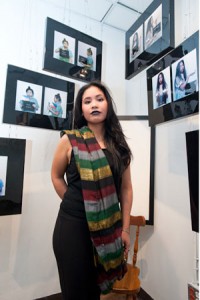
Comments (0)